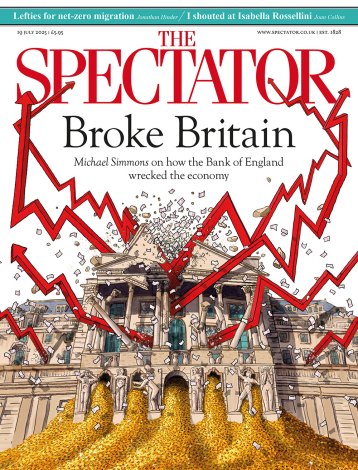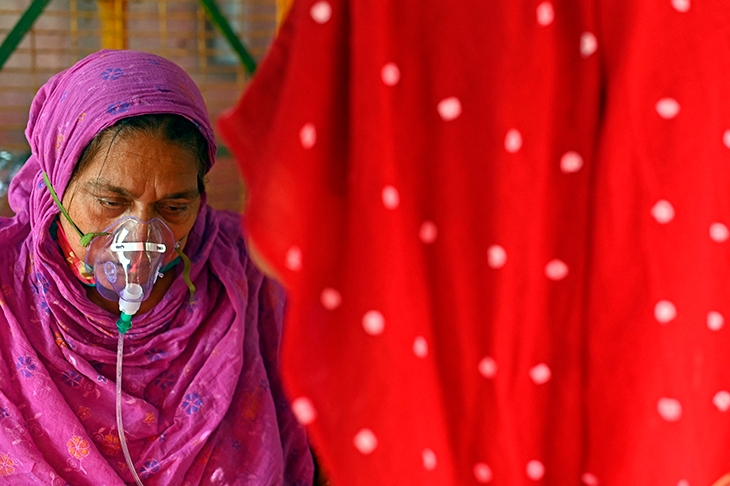New Delhi
Crematoriums are burning so many pyres that they have run out of space and wood to keep up with demand. Vehicles filled with bodies queue outside the funeral homes for hours. People are dying in the streets, some laid out on stretchers, while ambulances wait in vain outside every hospital in the city. This is what a collapsed healthcare system looks like.
There are 4,700 Covid intensive care beds for Delhi’s population of 19 million. There are 20,750 non-ICU Covid hospital beds, but most are without any oxygen support and have strict admission criteria. To find a bed, the families of Covid sufferers are forced to call hundreds of leads to see if any hospital has capacity.
I was one of those people desperately searching for a bed last week. A friend’s father was deteriorating fast at home, even though he was already on oxygen. It was clear that the oxygen wasn’t working and that he needed to be admitted to an ICU as soon as possible. Eventually, I found on the government’s online portal that there might be availability at one of the city’s biggest hospitals, Sir Ganga Ram. Nothing could have prepared me for what I found when I arrived to confirm the bed for him. It was mayhem — the entire hospital was overrun. No one could answer the basic question: is there a bed available for a coronavirus patient in critical condition?
The huge gap between supply and demand for treatments forces people to break the law
Finally, after 30 minutes of running from staff to doctors and even to security, pleading for my friend’s father, the best response I could get was from one nurse: ‘Bring the patient and we’ll see.’ I took one look at the huge line of patient-laden ambulances waiting outside and knew I could not take such a risk.
Since hospitals are virtually inaccessible, many patients, like my friend’s father, have no choice but to administer oxygen at home. This can be done either by buying an oxygen concentrator or getting an oxygen cylinder and constantly refilling it as it runs out. Concentrators usually cost around INR 30,000 (£288) and are now selling for up to £1,444. Most people simply can’t afford one.
As for oxygen cylinders, the demand is so high that you have to queue for hours at a supplier’s. Equipment is being sold at up to ten times the regular price, and the Indian people are being cheated at every step. Cylinders are sold underfilled and crook suppliers take the money and disappear. The Covid pandemic has rigged all aspects of the system against those with the least means.
Since the beginning of the year, Delhi has conducted around 60,000 daily tests. At one point, just 1 per cent came back positive. In the past fortnight, it has climbed as high as 36 per cent, suggesting there are far, far more Covid cases than available tests. Infections could be even higher now, but no one knows for sure because it has become impossible to book a home test. This has presented another problem. Until Monday, people could not be admitted to hospitals, even those solely dedicated to Covid, without a positive test. No wonder crooks were flogging tests at extortionate prices. Fortunately, at the start of the week, the high court of Delhi ruled that a positive PCR test was no longer needed to get a Covid bed, but many will already have died as a result of the policy.
Even those lucky enough to get a hospital bed are not being properly looked after, because the drugs and other treatments are so scarce. The most commonly prescribed Covid medicine, remdesivir, is almost impossible to find. In the whole of Delhi, there are around 20 distributors, but they all have very limited supplies. Every day the distributors replenish their stock, but it runs out within a matter of hours. Hundreds of people queue up long before their doors are even open.
Illegally, the drug is being sold for as much as INR 70,000 (£673) for one vial, 35 times the usual price. The government, courts and police are trying to crack down on all this, but the huge gap between supply and demand forces people to break the law.
Even if someone somehow manages to find a bed and medicines — and to pay for them — that is still not enough. Hospitals, both private and state-run, are putting out SOS calls on social media about their almost depleted oxygen reserves. Delhi has some of the best, most resourceful hospitals in all of India. But they are no match for Covid-19. At the Sir Ganga Ram, for instance, 25 people died because the hospital was forced to ration its oxygen reserves.
Maharashtra, one of India’s biggest states, has had around 60,000 daily cases every day for more than two weeks. It was the first area to face the collapse of its healthcare system. Delhi followed, and as the virus spreads, the same thing is happening all across India. West Bengal, which is still in the middle of a massive election and until very recently held rallies and roadshows of thousands of people, is seeing a steep rise in fresh cases. Uttar Pradesh, the most populous state, is reporting 30,000 cases a day.
All India’s cities are in complete or partial lockdown. The states used lockdown only as a last resort when the healthcare system collapsed. This is for two reasons: first, the cost of lockdown is too high for India’s economy, which is highly dependent on agriculture and small business. Second, a major section of India’s workforce is made up of migratory workers employed in seasonal labour.
Hundreds died in last year’s haphazard national lockdown when they were forced to travel thousands of miles to their hometowns without food, water or money. Many have now pre-emptively started going back in fear of a repeat of last year. Railway stations and bus stops are packed with these people fleeing to their families, often taking the virus with them.
The Indian people are exhausted, helpless and broken. Virtually everyone I speak to now knows someone who has succumbed to Covid. People are petrified and the atmosphere is filled with gloom. We have been forced to fight a battle which we should never have had to fight, doing things that the government is supposed to take care of. There is little else to do now but cling to the last threads of hope we can find.






Comments